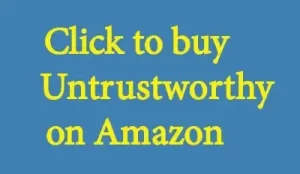A Look at Quinnipiac Assignment 11 – ICM 527 – Continuing Program Evaluation
This week, we continued studying the evaluation of public relations campaigns as a continuing program evaluation.
Ethical Issues Regarding Evaluation
As is true for any presentation of numbers, there are ways to spin findings which can lead a reader to believe one thing or another. You can use numbers to make a case. And some numbers, if suppressed or deemphasized or just plain omitted, could alter organizational decision-making. This only gets into telling the truth with numbers.
All bets are off if a strategic planner or any sort of analyst out and out alters the figures they have to present,. Or if they didn’t get accurate or truthful numbers to begin with.
Cans Get You Cooking
But even if the analyst is completely honest about results and figures, there are still issues with emphasis and language. For the Cans Get You Cooking campaign, the initial purpose had to have been to increase the sale of canned goods. Instead, they labeled the campaign as a success for leading to an increase in awareness of canned foods.
Awareness is a perfectly legitimate (and objective) goal for a campaign. But they seem to have swept the goal of increased sales under the rug. This was in favor of the one, demonstrable, favorable outcome – a boost in awareness.
On page 125, Place notes
“The role of ethics in public relations evaluation was described by participants as inherently associated with truth and fairness. For some professionals, this meant conveying evaluation data accurately and truthfully to organizational leadership or clients. For other professionals, this meant measuring whether the most accurate story or brand image reached an organization’s publics.”
Upshot
Professionals, fortunately, realize that others can misinterpret their words, even if they are reporting accurately on the numbers. If a campaign increases, say, signups for a class by five over an initial figure of five, then how do they report that?
Is it a report of a new five signups, or does the professional state that signups have doubled? Both are mathematically correct, but there is an exciting spin to the latter which may be making it look more significant than it truly is.
The Real Warriors and Okay 2 Talk Campaigns
A review of both campaigns revealed good attention to detail. Both campaigns seemed to be rather carefully planned.
The Real Warriors Campaign was designed to encourage active armed services personnel and veterans of recent American military campaigns (since 9/11) to seek psychological counseling and other help for post-traumatic stress disorder, e. g. ‘invisible wounds’. Primary research included focus groups and key informant interviews. All of the campaign’s goals were awareness-based.
The goal was to decrease stigma felt by veterans seeking mental health assistance.
Measurements
The measurement of the effectiveness of the campaign included the distribution of campaign materials, website visitors, and social media interactions, plus news stories. This is good for an awareness campaign, but where are the actions? Where are the increased numbers of veterans seeking help?
A far more germane measurement would be to show an increase in personnel hours for armed forces mental health professionals.
Or perhaps there could be a measurement of the hiring of more counselors, or agreements with more civilian counselors. Without naming names or otherwise violating privacy, the number of patients in treatment is easy to tally. So can the number of appointments made, even if some of the appointments were never kept. Another objective measurement of success would be a decrease in suicides and fewer calls by veterans to suicide prevention hotlines. The campaign shows none of that.
OK 2 Talk
As for the OK 2 Talk Campaign, that campaign’s goals were to create awareness and also to launch a safe social media space. Tumblr was their chosen platform as it allowed for anonymity. It seems to have also been chosen for a demographic match although that is not spelled out.
Metrics
The measurement of the effectiveness of that campaign was a lot more closely aligned with its initial goals than the Real Warriors report showed. For example, the OK 2 Talk report gave objective figures regarding engagement on OK2Talk.org. The page views are not necessarily indicative of much. It is the content submissions which seem to better reflect engagement.
On the Tumblr blog, they encourage visitors to anonymously post about how they are feeling. The blog makes it clear that they will not post everyone’s writing.
However, there are several well-written or illustrated posts showcasing various viewpoints. OK 2 Talk intelligently shows all kinds of posts. This is even those where the writers clearly need help or are just reblogging messages put together by creative professionals.
The Continuing Program Evaluation Campaign
The campaign report shows the number of content submissions and the number of clickthroughs to a ‘get help’ screen. There is also a statement regarding ‘thousands’ of comments but no specifics. They could have shown this more clearly. But that does not truly matter.
Showing the number of clickthroughs to the ‘get help’ screen was an objective and direct measurement of how the campaign is going. It answers the question, ‘did it work, or was it just a colorful and fancy waste of time?’ with ‘yes, it did’, and far more effectively than the distribution of materials ever could.
Smith Says…
As Smith notes on page 335
“Guesses aren’t good enough; Hard work and cost aren’t measures of effectiveness; Creativity isn’t, either; Dissemination doesn’t equal communication; Knowledge doesn’t always lead to acceptance; and Behavior is the ultimate measure.”
In particular, Real Warriors should have remembered that dissemination does not equal communication. After all, the distributed campaign materials could have gone right into the trash. Yes, the campaign’s stated goal was awareness. But the campaign can only really measure it with some form of observable action. Without some demonstrated actions, Real Warriors seems more like a lot of paper redistribution.
The two campaigns have similar goals, and both have the valiant ideal of helping the mentally ill. But it’s only OK 2 Talk which is showing objective and relevant results.
Relating it all back to the ILSC
For the Institute for Life Sciences Collaboration, deciding what to measure, and to make sure it is being accurately measured, are important steps to take. It is pretty easy to count website visitors using Google Analytics or the like. But a better measurement is actual engagement like blog comments, Facebook comments and shares, and LinkedIn comments. This will tie directly to awareness objectives.
For objectives on adding high schools to the Small World Initiative, good measurements include the number of times that educators click through to a ‘get information’ page. The ILSC should add one to a revamped website. They can also expect such inquiries in the comments and messaging sections of a possible future ILSC Facebook group.
A similar vehicle for obtaining such inquiries could be a possible future LinkedIn group for the ILSC, and its topics.
Measurements of the campaign reaching donors could be a look at the number of visits to a donations page. It would also be the percentages of site visitors who went all the way through the online donations funnel. Knowing where they stop (if a visit does not lead to a donation) would be extremely helpful information to have.
More About the Continuing Program Evaluation
For the website, Google Analytics should be used to tie back to visitor acquisition. If Facebook turns out to be the most popular place for visitors to come from, then the ILSC should concentrate there. A surprisingly small amount of money (e. g. $20.00 or so) can boost a post and reach even more people.
This measurement is useful for all types of objectives, as it helps to define where to best concentrate the ILSC’s social media time. There is little use in devoting substantial time to LinkedIn if the publics don’t come to the website and don’t donate any funds.
Awareness needs to be related to action, for it is action that will get the SWI out of its funding gap and help keep the ILSC going for years to come.
Leave a Comment









You must be logged in to post a comment.